I made my first trip to Krete in September 2010. Knossos is a must-see! I spent the day there and was fortunate enough to have a good natured and informative tour guide. The weather was clear and warm ... there were lots of tourists but the size of Knossos seemed to swallow them up and leave plenty of space for me to wander around without being rushed or bothered.
Knossos was the capital city of the ancient Minoan civilization, which flourished from 2000 BCE until at least 1380 BCE. The ruins of the city are magnificent and cover a lot of ground.
The site was first excavated by Sir Arthur Evans between 1900 and 1931 CE and the ruins we see now are simply an extension of the work he began. The photographs here are intended as a look-see for those of you who have not made the trip to Knossos ... if you go to Krete, you must spend some time at Knossos ... you will be greatly rewarded for you efforts.
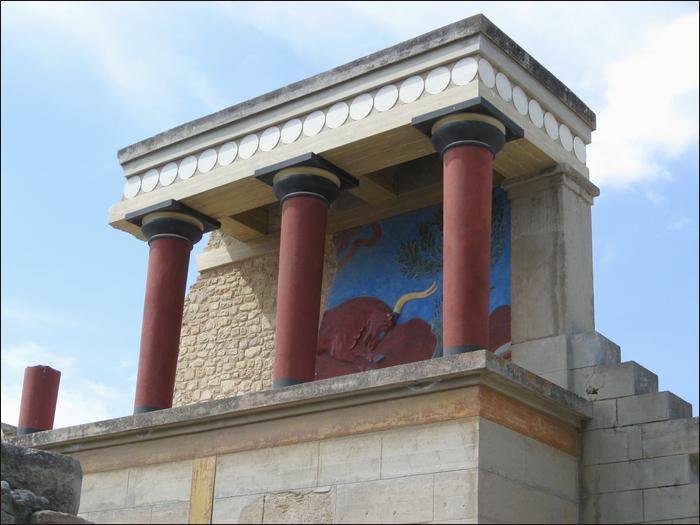
The images provided here are original and copyrighted. You may use these images on your website if they are accompanied by a link to mythagora.com and an unambiguous declaration that the images are copyrighted by M.W. Stewart. All other use of these images is strictly forbidden without written permission.
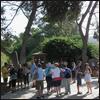 |
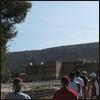 |
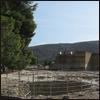 |
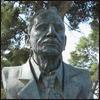 |
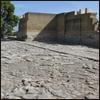 |
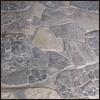 |
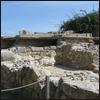 |
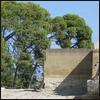 |
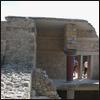 |
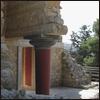 |
 |
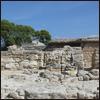 |
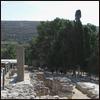 |
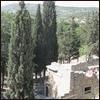 |
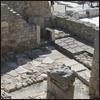 |
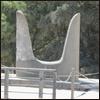 |
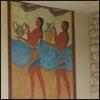 |
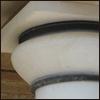 |
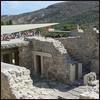 |
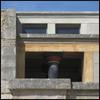 |
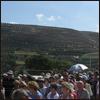 |
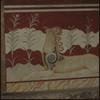 |
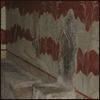 |
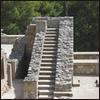 |
 |
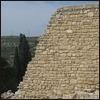 |
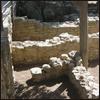 |
 |
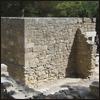 |
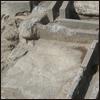 |
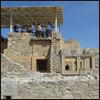 |
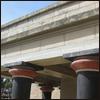 |
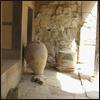 |
 |
 |
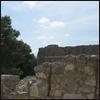 |
 |
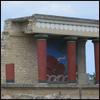 |
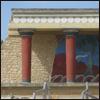 |
 |
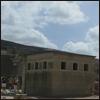 |
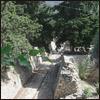 |
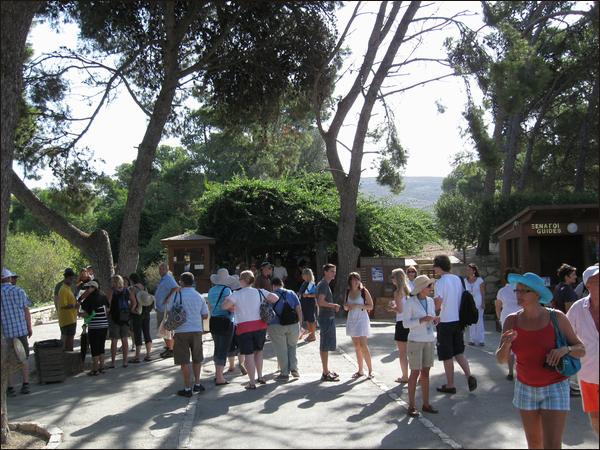
The shaded entrance with the magnificent hills in the background was the perfect starting place for our entrance into the ruined city of Knossos. Most of the visitors had tour guides because there is so much to see and there are many subtle facts that you might miss if you just read the guide books. Our guide was a pleasure ... he obviously had taken a lot of people through the ruins of Knossos but he never seemed to lose his enthusiasm.

This is the first thing you see as you enter the ruins of Knossos. The wall and the circular pits off to the left are slightly deceiving ... the majority of the ruins are over the hill to the right and invisible from the path.

This image gives you a better view of the entrance to Knossos.
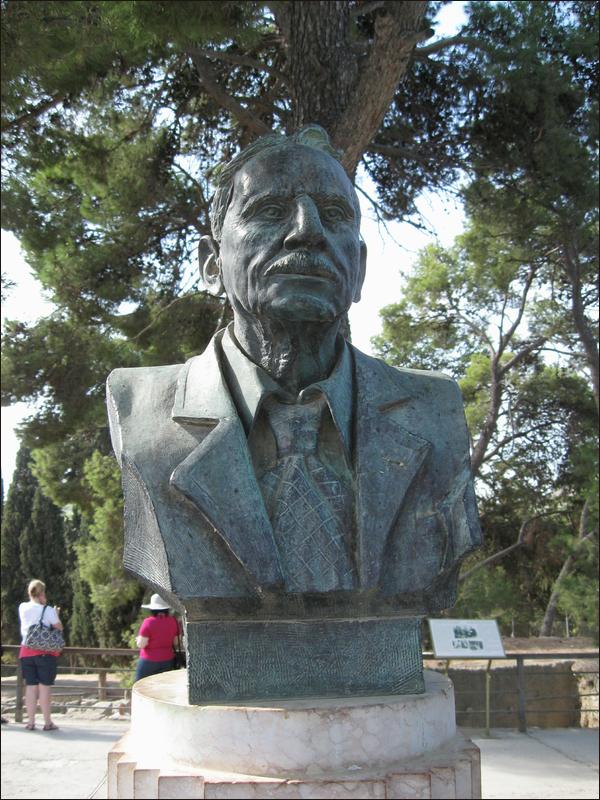
Once you are inside Knossos, you will see a bust of Sir Arthur Evans. It could be argued that if Sir Arthur had not recognized the significance of Knossos, we would not have the wonderfully preserved city we have today. His tireless work took decades and to honor him with a simple bust seems appropriate but understated.
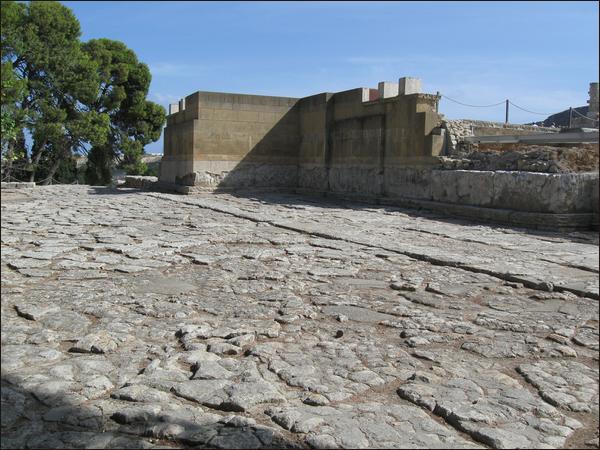
Compare these broken paving stones with the stones in the following picture.
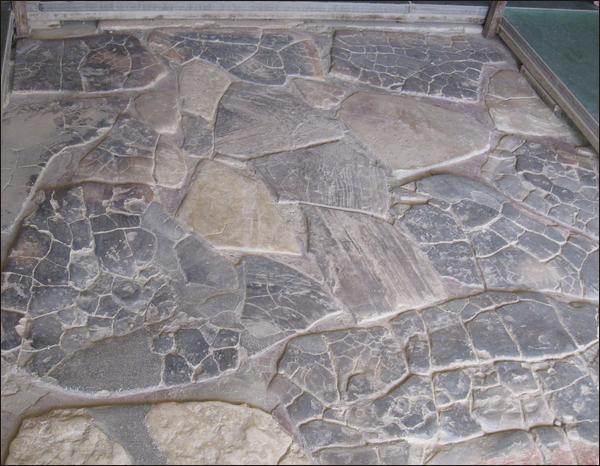
These paving stones are in excellent condition. We can assume that most of the areas between the buildings were paved in this manner.

The excavations at Knossos are a work in progress. Most of the buildings served unknown purposes.
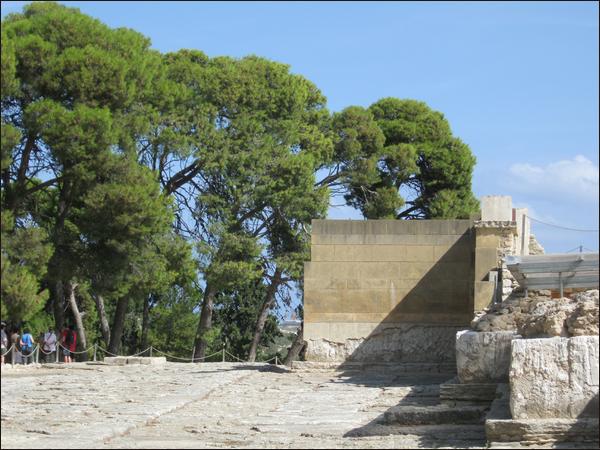
The location of most of the original buildings can only be determined by their foundations but some of the buildings have been partially restored.
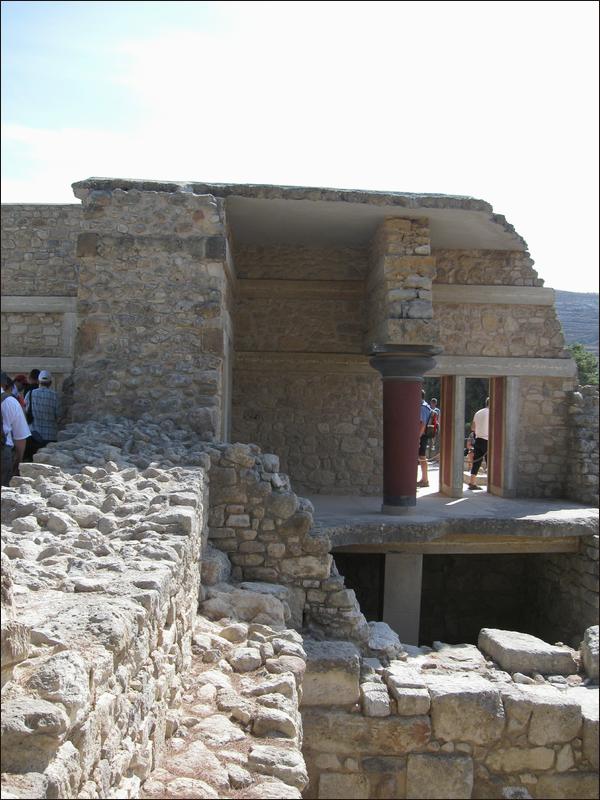
There didn’t seem to be any colossal stones used in the construction of the buildings but as you can see from the width of this wall, these buildings were the result of considerable effort.
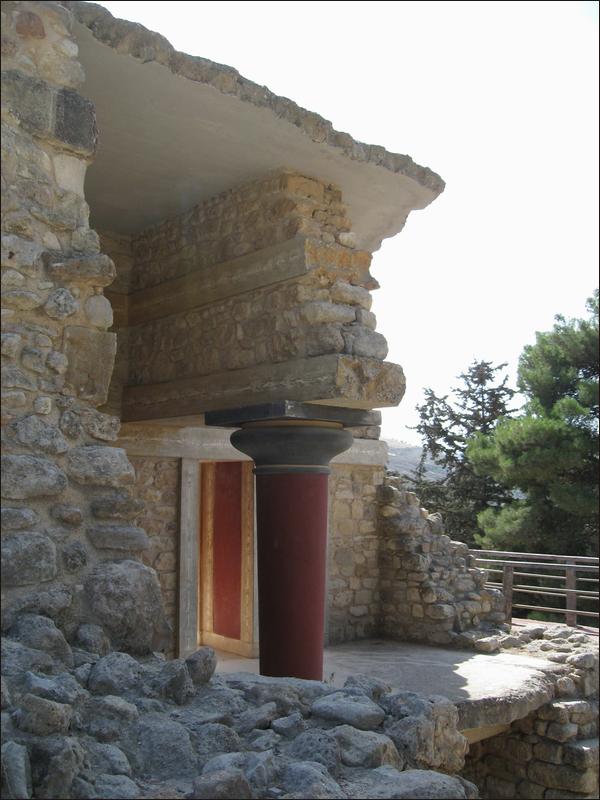
This is a reconstructed column on the second floor of one of the first buildings you encounter.
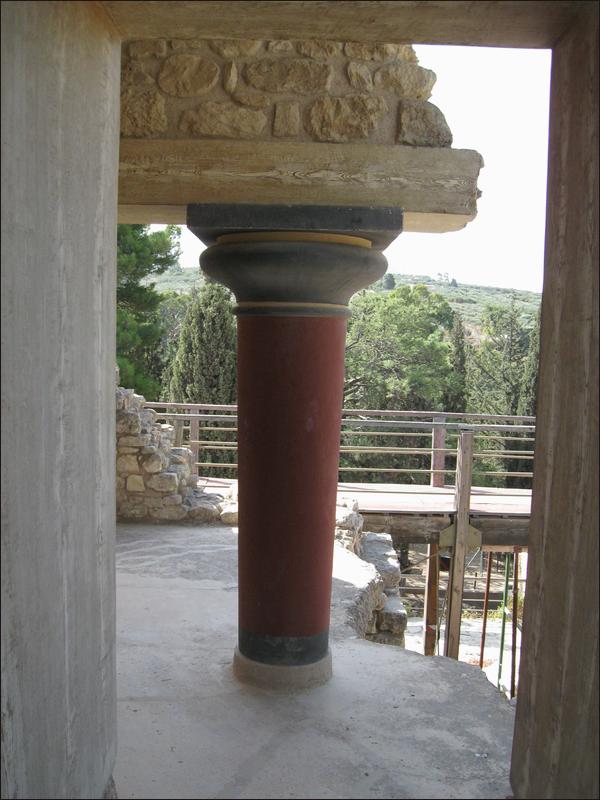
A closer look at the column in the previous picture.
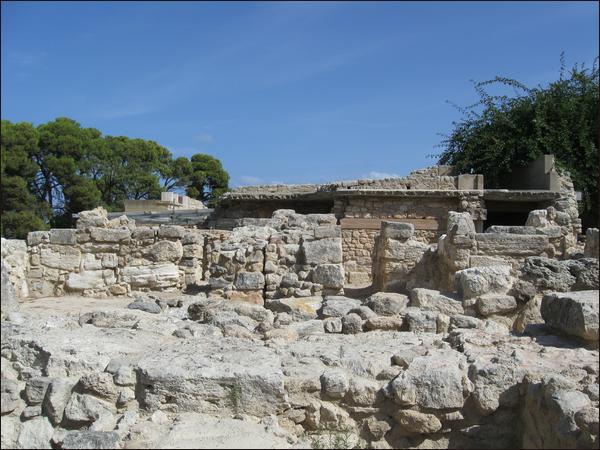
Many of the remaining buildings have been reduced to their foundations ... the next few photos are simply different groups of ruined buildings.
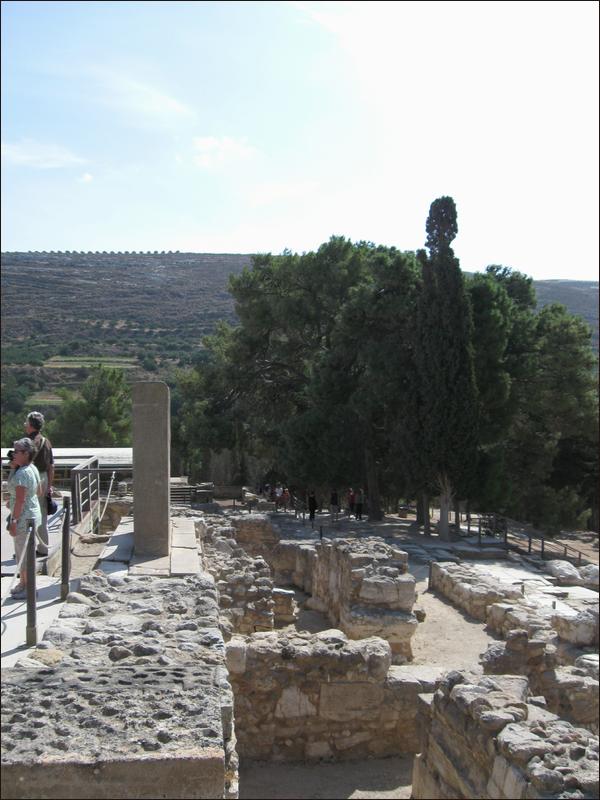
The palace and the surrounding buildings have been in ruins for almost three thousand years.
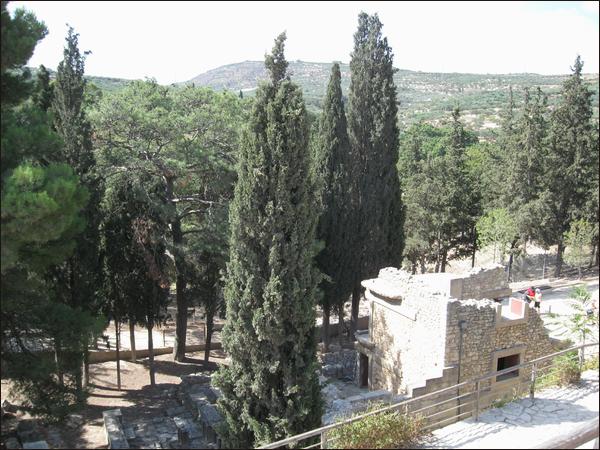
The buildings are form-fitted into the hilly landscape.
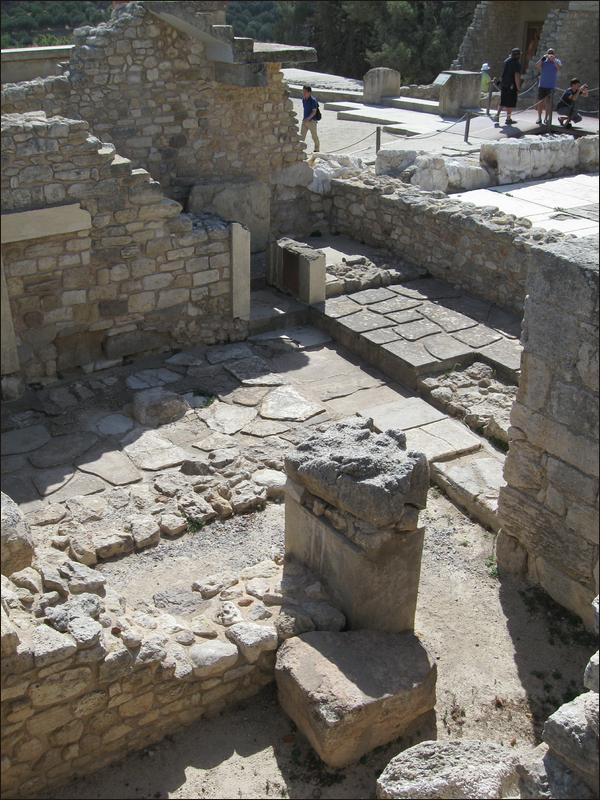
The lower levels are better preserved than the upper floors.

The partially reconstructed bull horns, which were symbolic of the Minoan culture.
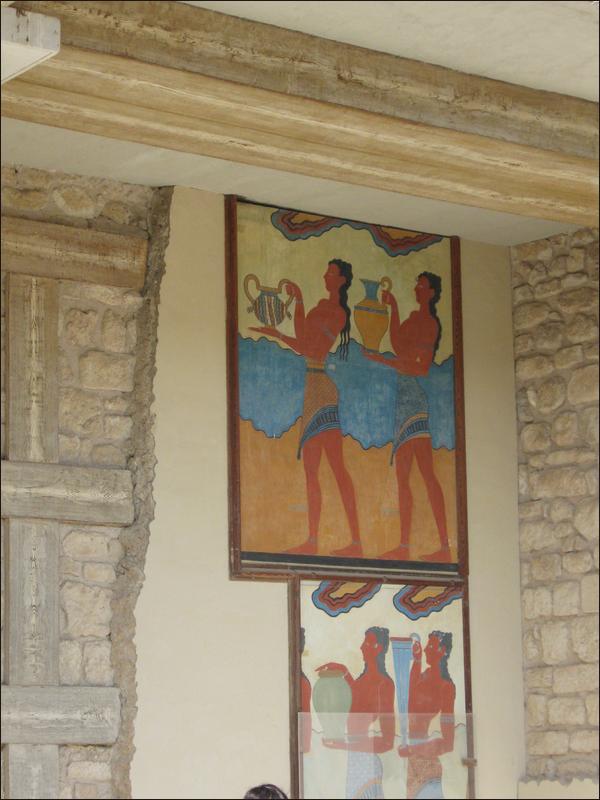
The frescos which are still on-sight give you an idea of the way Knossos might have looked when it was at its peak of prosperity.
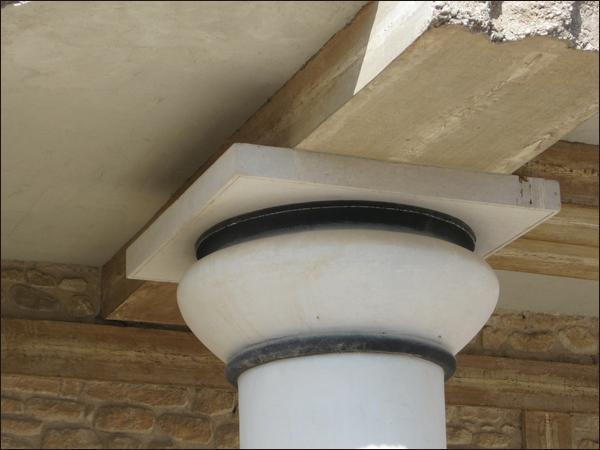
This reconstructed column is typically Minoan ... it has the grace of the Egyptian column and the solid look of the later Greek columns.
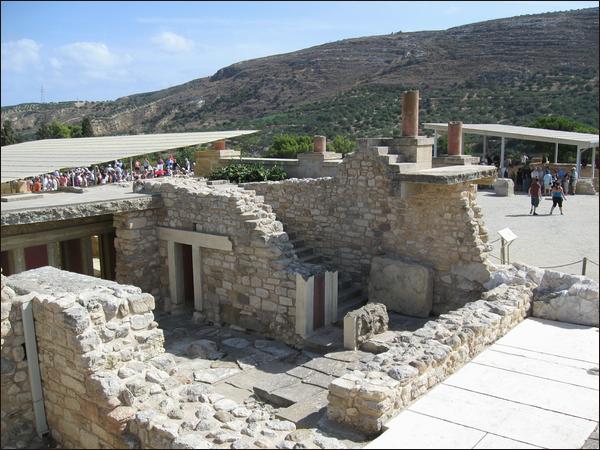
Knossos was not a fortress, it was a palace complex for the king and his attendants and designed for the administration of commerce.
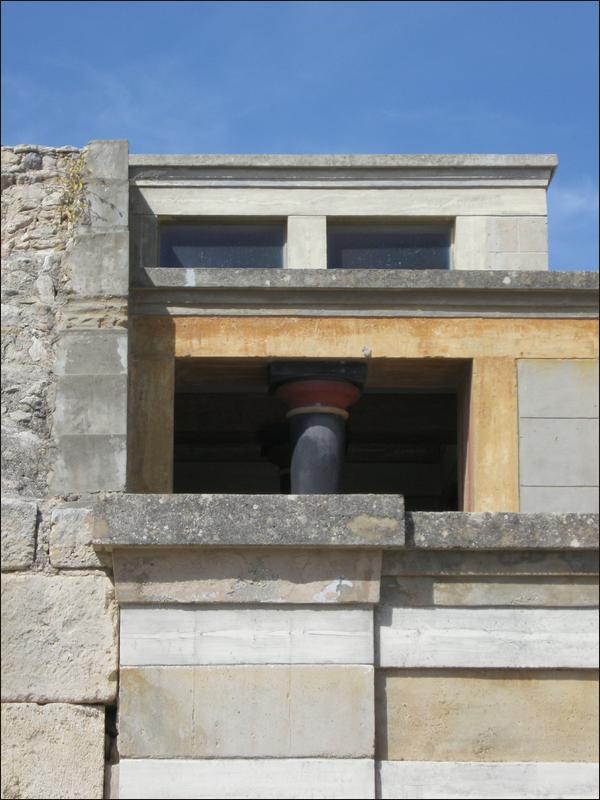
It appeared that all the buildings of Knossos were multi-storied ... some had basements for the storage of commodities.
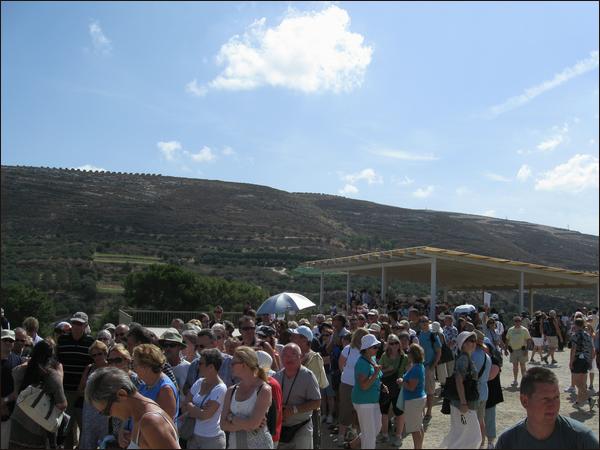
Yes ... there were lots of people at Knossos when I was there but this picture is deceiving ... this was the line to see the throne room and it was the only time I had to stand in line or wait to see anything. The ruins of Knossos cover a lot of ground and it was easy to stroll and absorb the sights at my leisure.
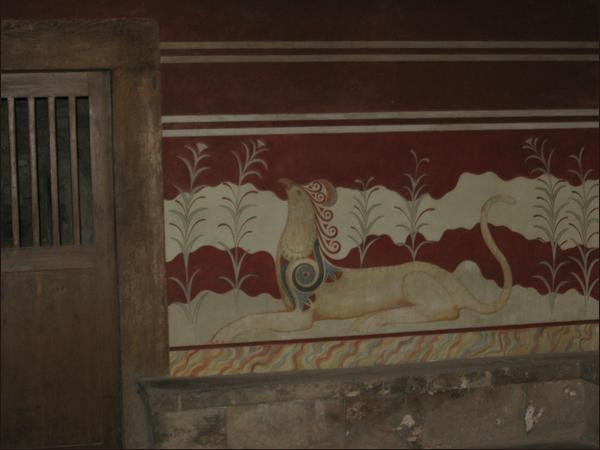
The walls of the throne room were covered with elaborate decorations.
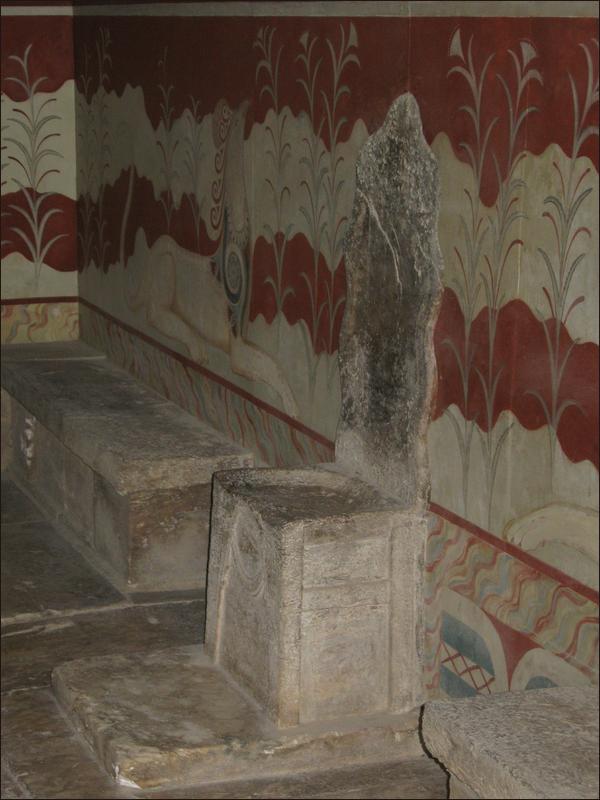
This is the actual throne of King Minos.
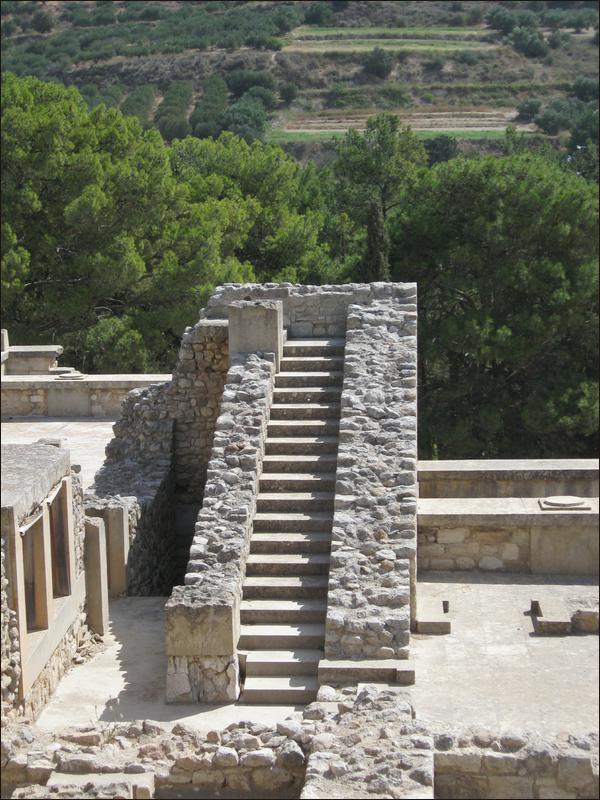
A stairway to a long forgotten upper room.
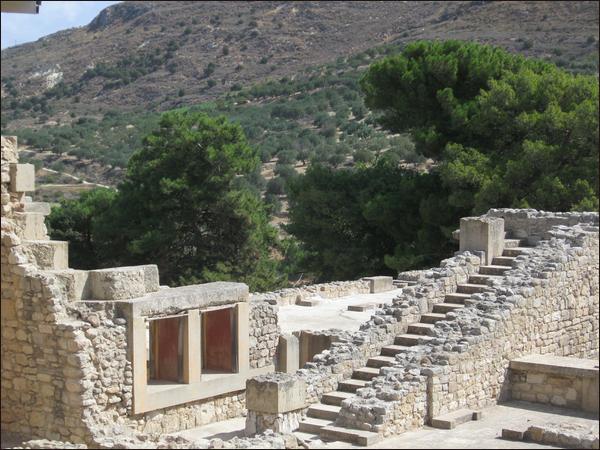
Knossos is situated on high ground but is still surrounded by gentle hills.
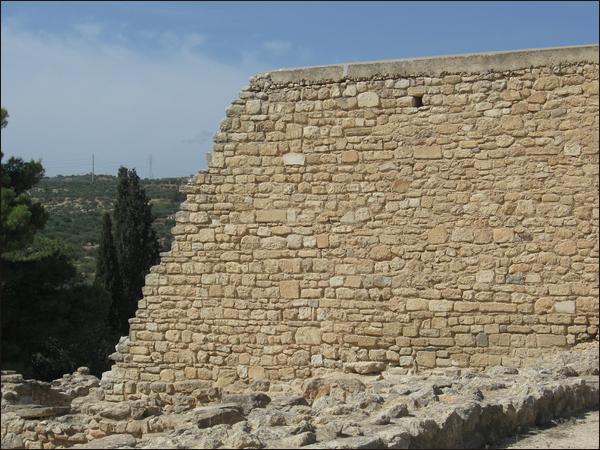
This is a slopping wall which was part of the original palace complex.
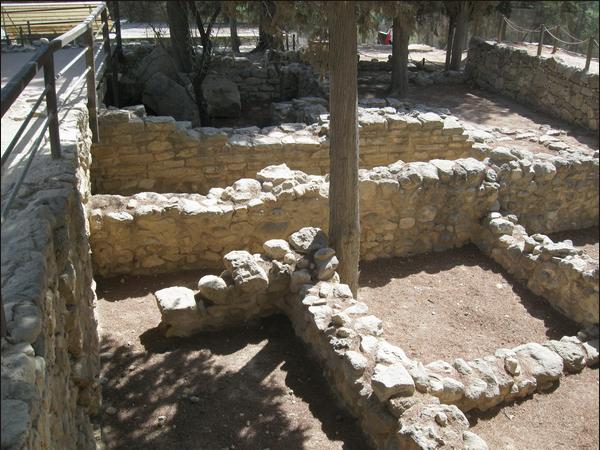
These crumbling walls are all that’s left of the passageways which led to some lower rooms.

When you walk at ground level, it's easy to forget the size of the structures which once existed here.
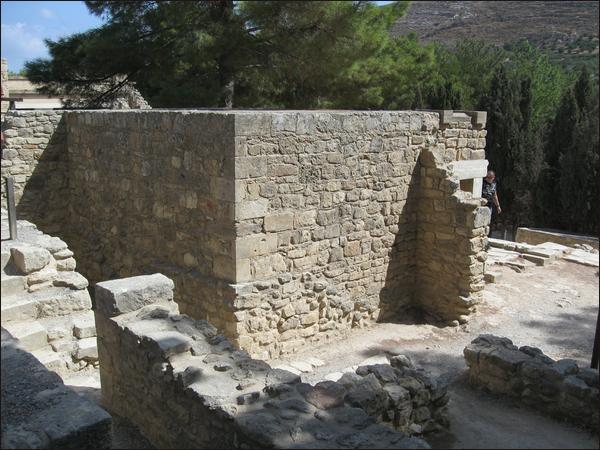
The walls of many buildings are still intact but the original purpose of the various ground level rooms is not known.
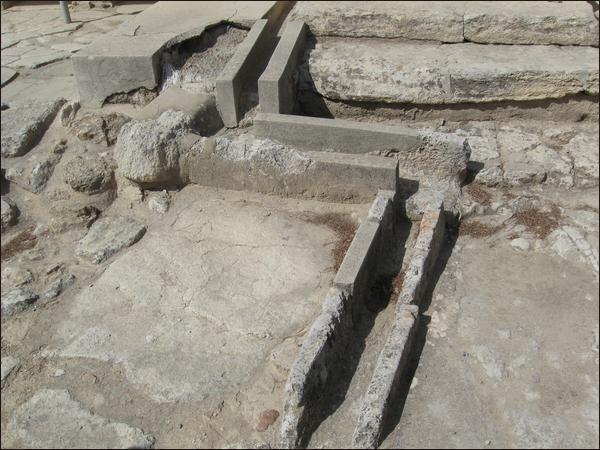
Knossos had an impressive underground waste-water system.

The floor where these people are standing would have been part of an interior walkway when the palace was fully functional.
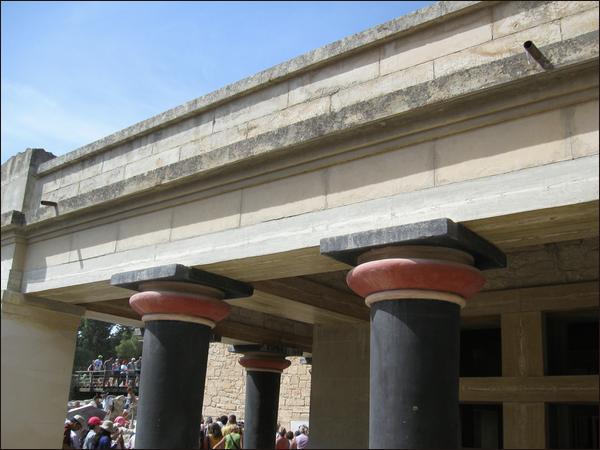
The columns shown here are distinctively Minoan.

An amphora sitting outside a residence.
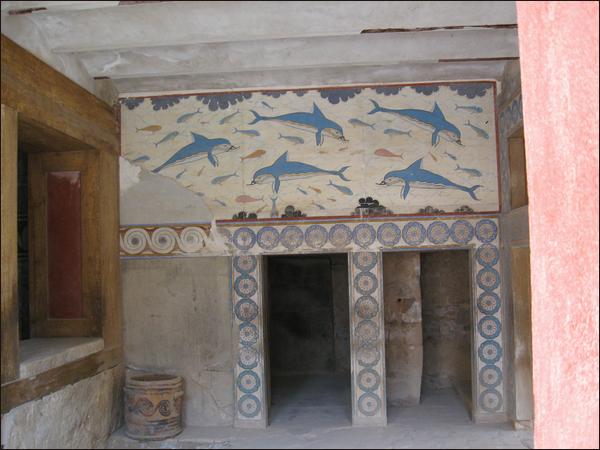
A large and very elegant fresco.
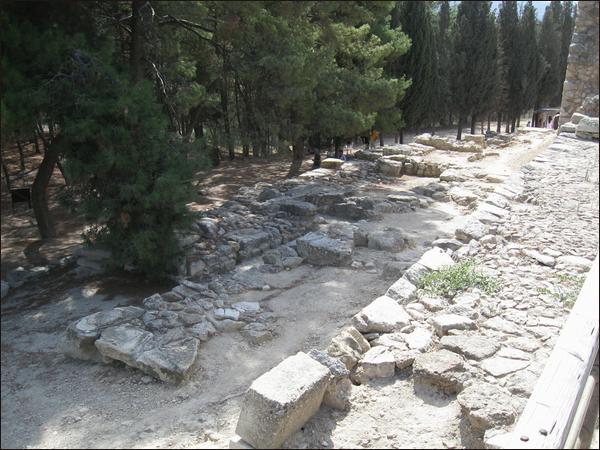
The majority of the ruins of Knossos look like what you see here.
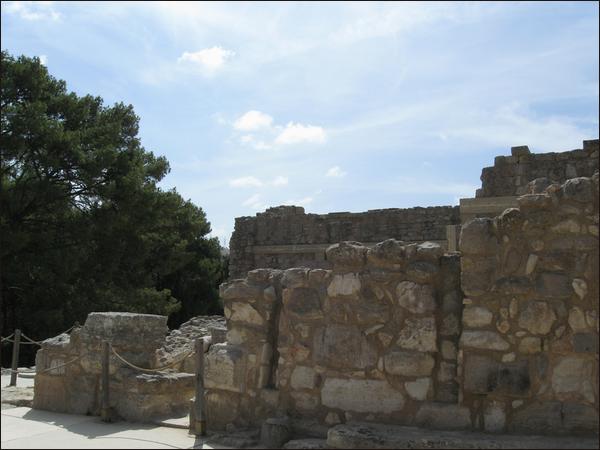
Even though most of Knossos is in ruins, the sheer size of the palace complex has ensured that enough of the buildings are still semi-intact and can be appreciated for their size and permanence.
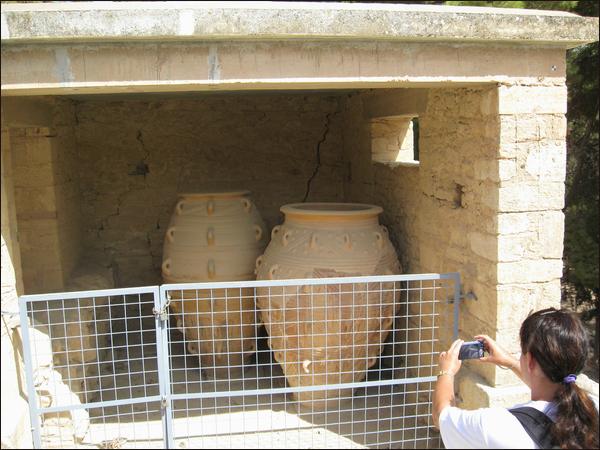
These giant amphorae were used to store various wet and dry commodities.
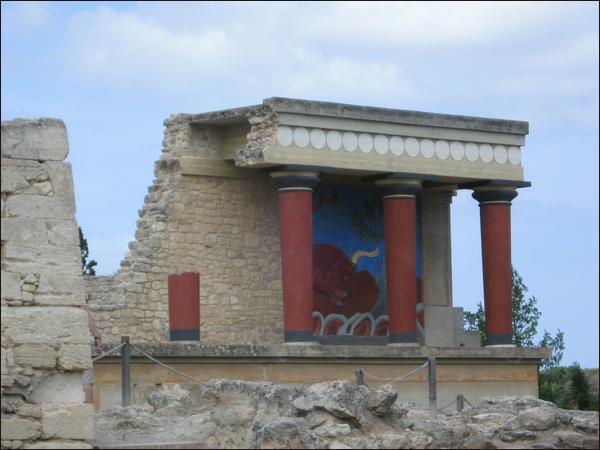
This large reconstructed façade is one of the many reminders of what an elaborate and beautiful place Knossos used to be.
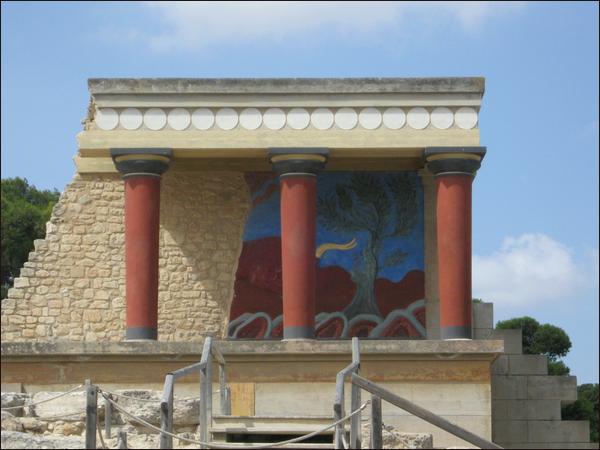
A different view of the reconstructed façade.
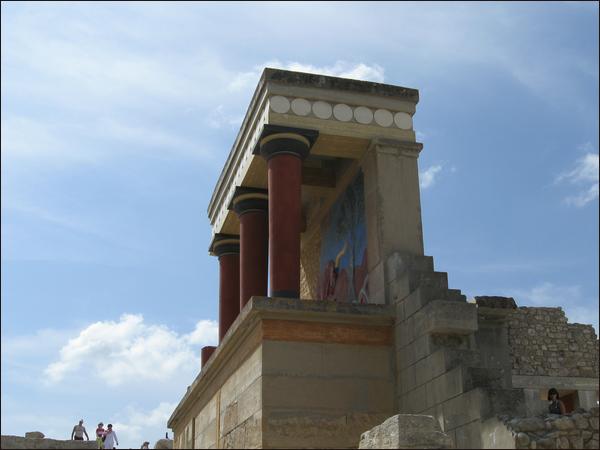
Another view of the reconstructed façade.

This is a relatively small building near an entrance of the palace complex.
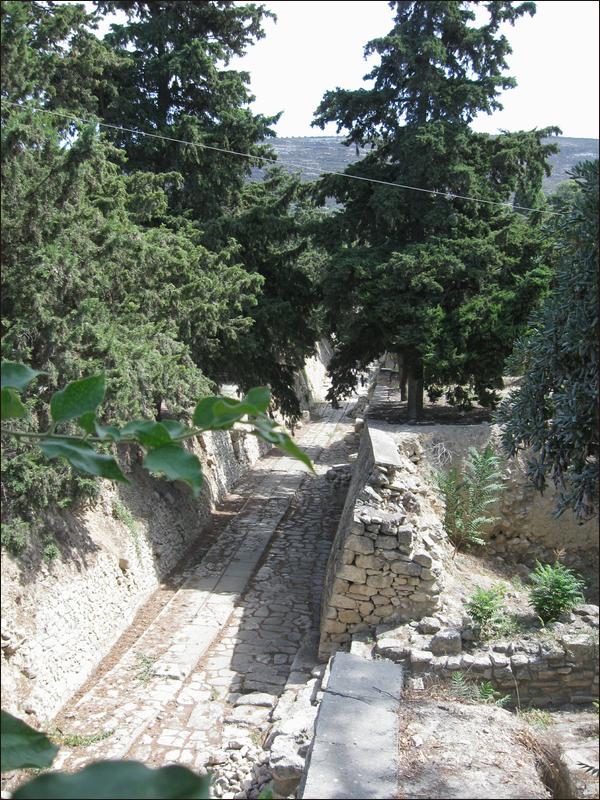
This paved street is called the Royal Road and was once lined with houses.